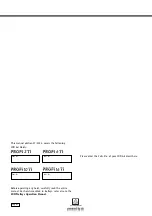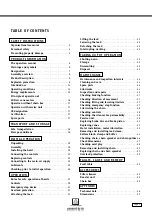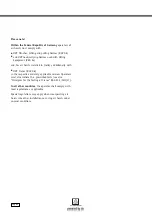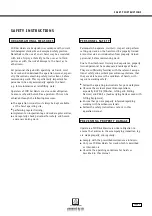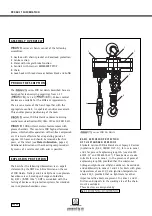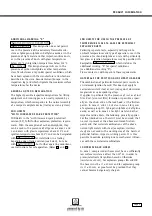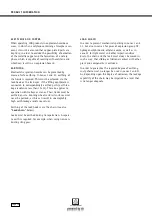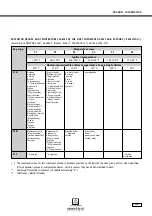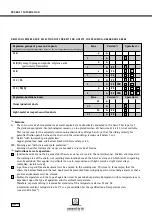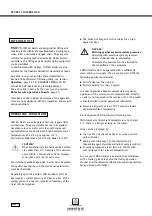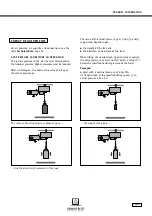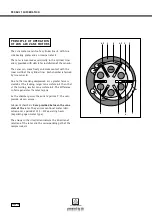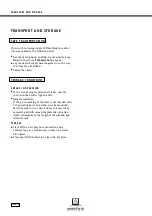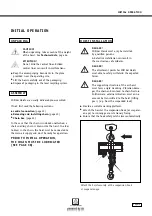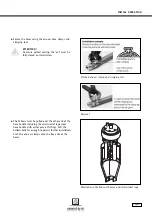
series air hoists consist of the following
assemblies:
1
Gearbox with chain sprocket and overload protection
2
Centre section
3
Motor with integral brake function
4
Controls with main air EMERGENCY STOP
5
Chain
6
Load hook with load sleeve or bottom block and buffer
The
series JDN Air Hoists described here are
designed for load-carrying capacities from 3.2 t
(
) to 16 t (
). Various control
devices are available for the different requirements.
The air vane motor of the hoist, together with the
appropriate controls, is capable of sensitive movement.
This enables precise positioning of the load.
series JDN Air Hoists conform to driving
mechanism classification M3/1Bm, ISO 4301/FEM 9.511.
JDN Air Hoist motors feature rotors with
grease chambers. This contains JDN high-performance
grease, which enables operation with oil-free compressed
air. It remains effective for an operating period of
approx. 250 hours and should be renewed after five
years, at the latest (see
Motor lubrication,
page 43).
Additional lubrication with oil-bearing compressed air
by means of a service unit with oiler is possible.
The basis for the following information is an expert
statement by the DMT Gas & Fire Division on the use
of JDN Hoists, Trolleys and Crane Systems in explosion-
hazardous areas, based upon European Guideline
94/9/EC
1
("ATEX 100a"). DMT is accredited with the
testing of devices and protection systems for intended
use in explosion-hazardous areas.
series JDN Air Hoists
B A S I C E X P L O S I O N P RO T E C T I O N
O F T H E S TA N DA R D V E R S I O N S
Standard version JDN Air Hoists are category 2 devices
(Guideline 94/9/EC, DIN EN 1127-1
2
), for use in zone 1
and 2 for gases of explosion group IIA. (see also IEC
60079-12
3
and IEC 60079-20
4
). These devices are also
suitable for use in zone 2, in the presence of gases of
explosion group IIB, provided that the substances
hydrogen sulphide and ethylene oxide can be excluded
and additionally in zones 21 and 22 for dusts with glow
temperatures above 210¡C and ignition temperatures
above 202¡C, provided that no light metal or other
impact-sensitive dusts are present. In zones 1 and 21,
friction and impacts in the working area of the chain
must be excluded.
These devices are designated by:
.
32
4
6
5
1
2
3
E X P L O S I O N P R O T E C T I O N
16
3
P R O D U C T D E S C R I P T I O N
A S S E M B LY O V E R V I E W
P RO D U C T I N F O R M AT I O N
Page 8


